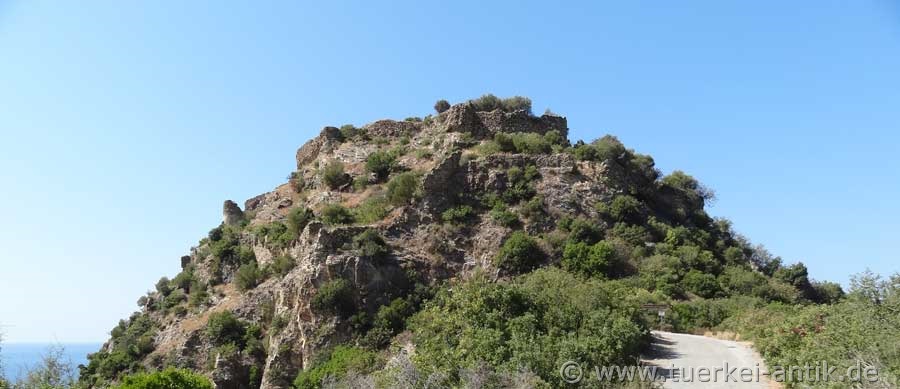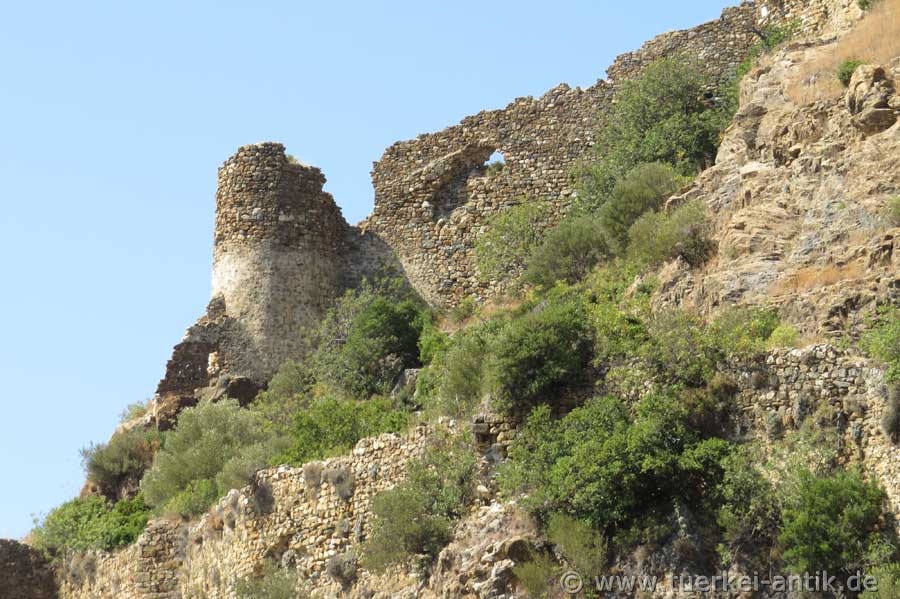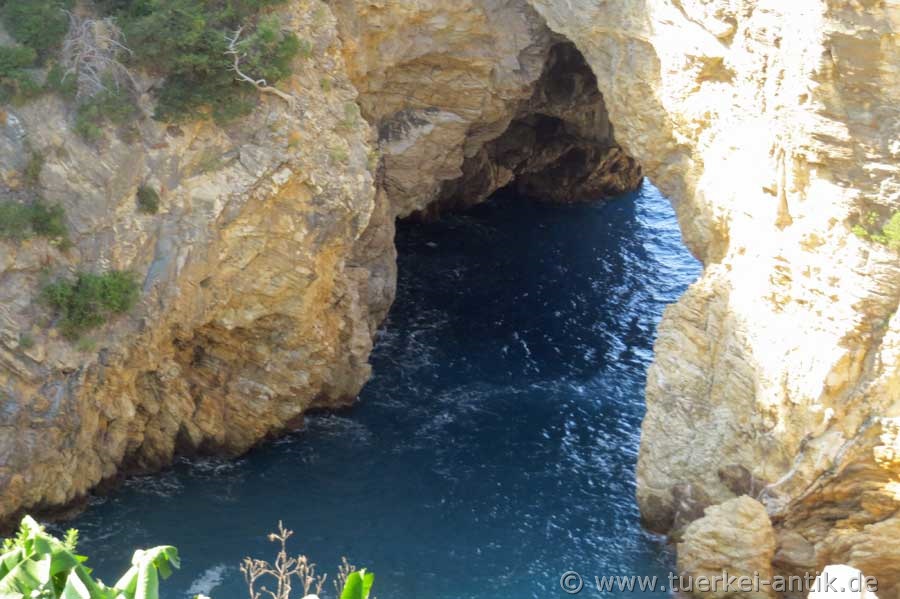 |
| Antiochia ad Cragum in Cilicia | |||
|
|
|
||
| The castle hill | |||
|
The name of the city, Latin Antiochia ad Cragum, (translated: Antiochia on the cliffs) goes back to the location of the city: high above the sea on steep cliffs. |
|||
|
|
|||
| At the Colonnade Street | |||
|
The city was built primarily on the sloping terrain reaching down to the sea. Despite the fact that the city lies on the coast, its centre is several hundred metres above sea level and was protected from attacks from several sides by cliffs and steep slopes. The area of the city, where the old architecture is still preserved, lies within the boundaries of the modern village of Güney and occupies an area of over 24 hectares. The Acropolis occupies the highest inhabited point and allows a view of the city centre. |
|||
|
|
|||
| City gate at the end of Colonnade street | |||
|
The centre of the city with a column road, agora, thermal baths, temples and churches lies high on the slope above the sea, surrounded by extensive necropolises. For a long time it was assumed that the city had been rather insignificant and only superficially Romanized, but in recent years there have been increasing signs that Antioch was more important and richer than assumed. In 2012, for example, archaeologists from the University of Nebraska uncovered a 150 square meter mosaic from around 300 AD. |
|||
|
|
|||
| Roman bath | |||
|
The city was probably founded in the middle of the 1st century AD by King Antiochos IV of Kommagene (38-72 AD), after Claudius entrusted him with the control of Rough Cilicia in 41 AD. Since 72 AD it belonged to the new Roman province of Cilicia, from the beginning of the 4th century to the 7th century to the province of Isauria. It is assumed that Antiochia ad Cragum was also one of the bases of the Cilician pirates. The so-called Cilician pirates were a naval power operating in the entire Mediterranean region, which from the 2nd century BC until its subjugation by Gnaeus Pompeius Magnus in 67 BC dominated above all the eastern Mediterranean. |
|||
|
|
|||
|
|
|||
| 7 meter long outdoor pool, covered mosaic all around | |||
|
|
|||
|
In 2002, some pieces of a mosaic were found by chance by an American archaeologist on a freshly ploughed field. At that time there was not enough money in the local museums to start excavations. Ten years later, in 2012, archaeologists at the University of Nebraska uncovered a 150 square meter mosaic from around 300 AD. Surprising is the good, partly almost flawless condition. It emphasizes the pure Roman character of this city. The mosaic frames the 7-metre-long outdoor pool of a Roman bathing complex. It shows large squares with different geometric patterns on a white background. The square was surrounded by flanking porticoes. The surface of the mosaic is so large that it could only be completely uncovered one year later. The American archaeologists assume that it formed the decorative entrance to the adjacent bathhouse. For protection, the mosaic was covered with tarpaulins and filled with sand after careful examination and documentation. We can look forward to further results of excavations. In June 2015, structures of a Bouleuterion (town hall) were discovered, which will probably be completely uncovered in the coming excavation campaigns. |
|||
|
|
|||
|
|
|||
|
Building remains below the city gate |
|||
 |
|||
| The castle hill | |||
|
|
|||
| The castle hill | |||
 |
|||
| The castle | |||
|
|
|||
| Hidden harbour below the castle | |||
 |
|||
| Entrance to the harbour | |||
| Photos: @chim, Monika P. | |||
| Translation aid: www.DeepL.com/Translator | |||
| Source: Wikipedia and others | |||
|
|
|||

